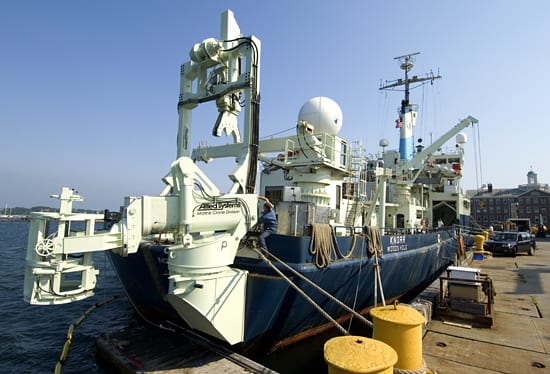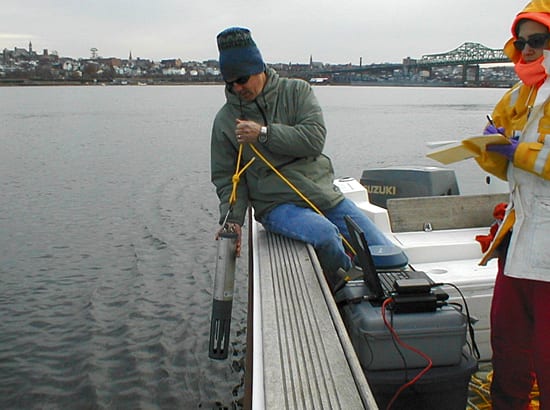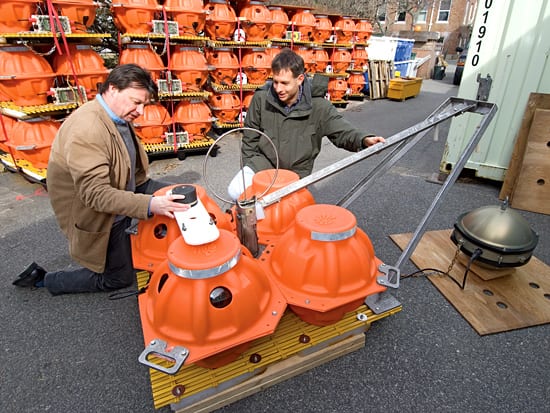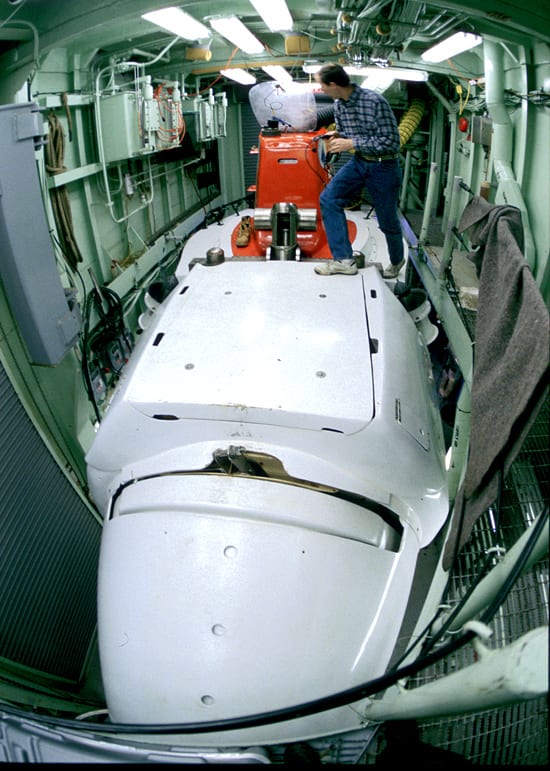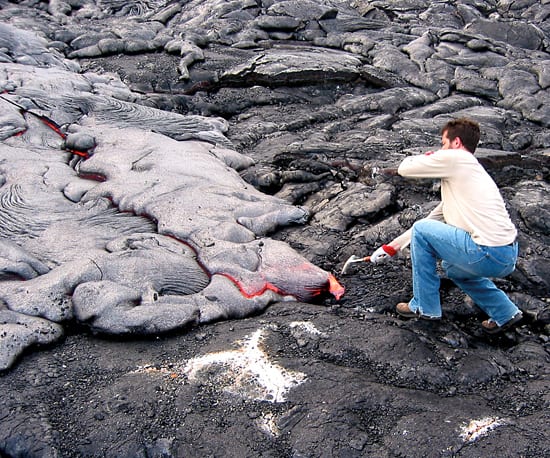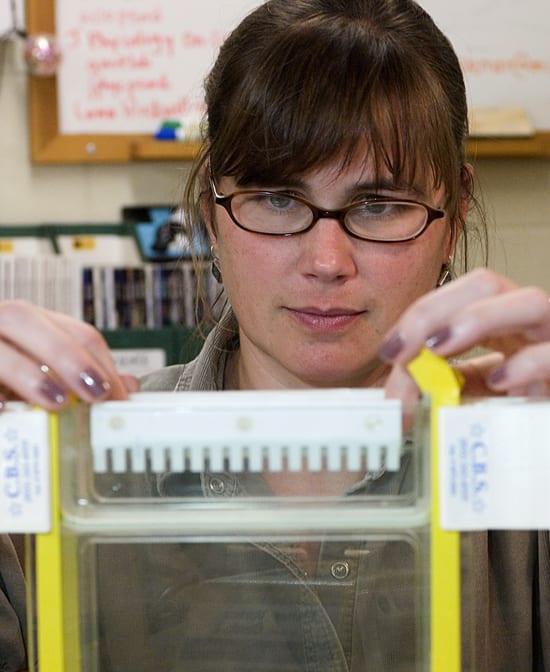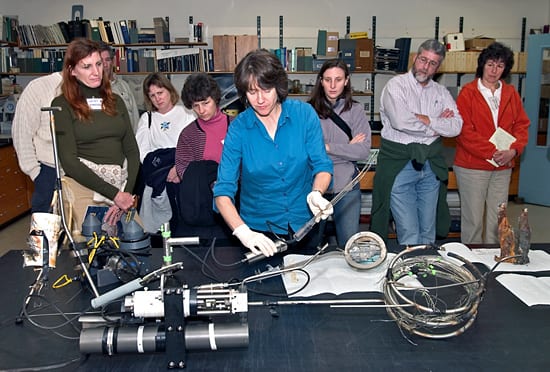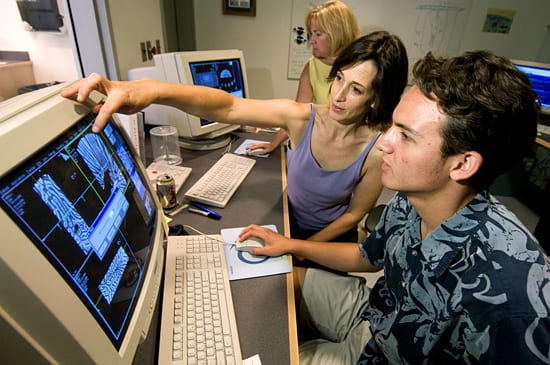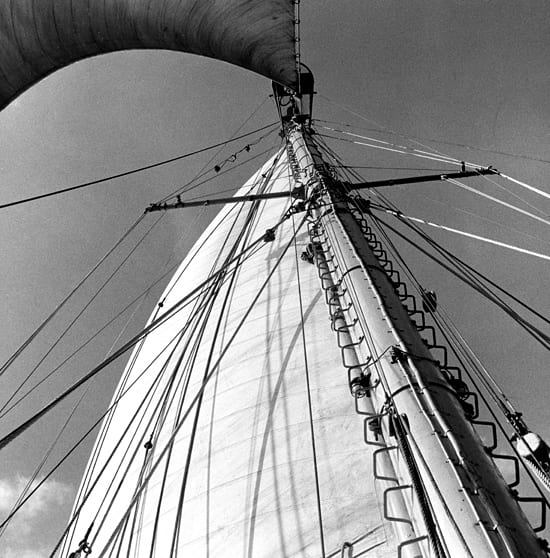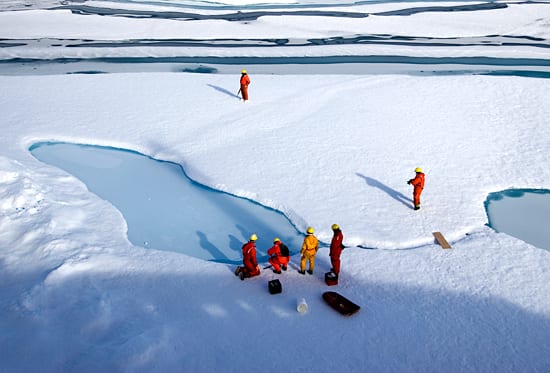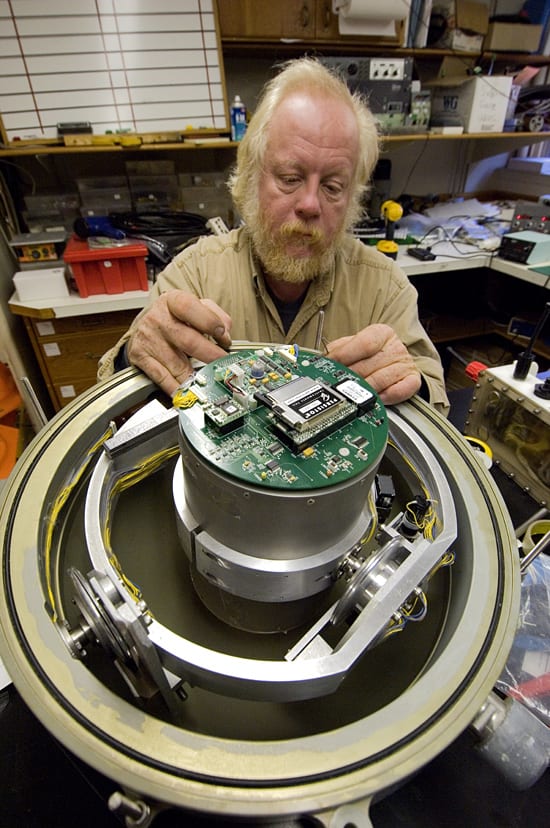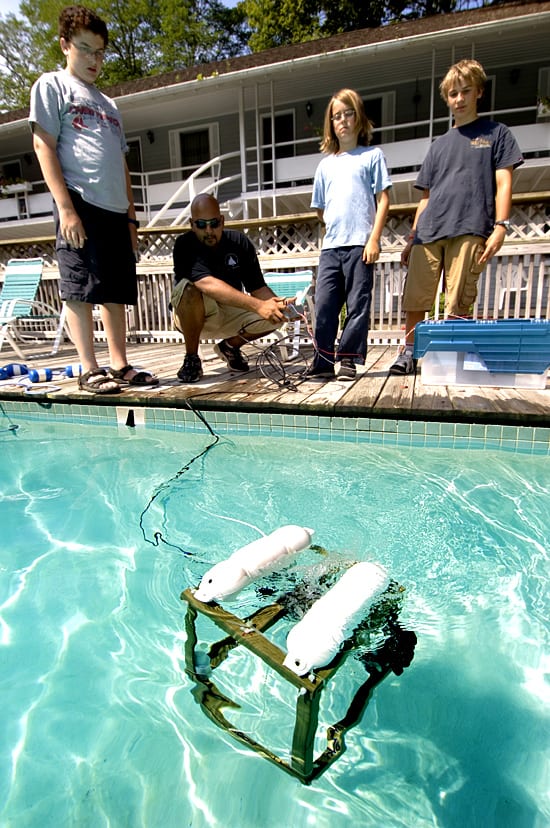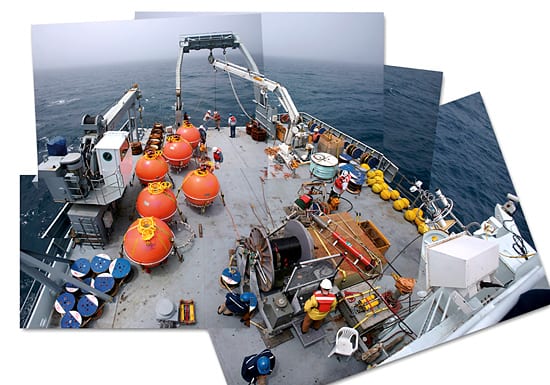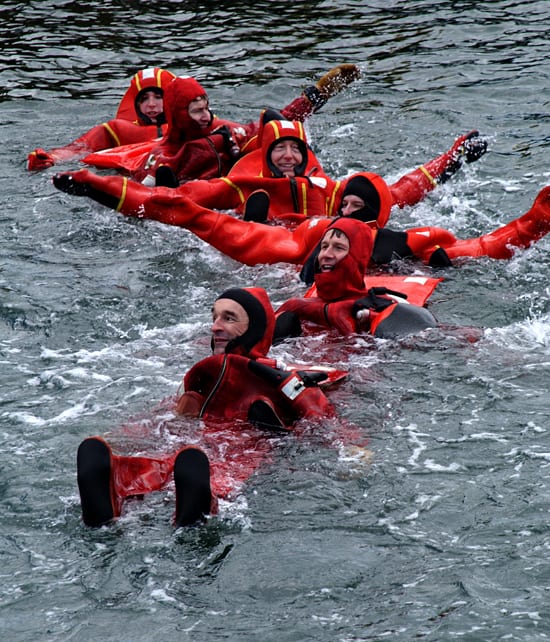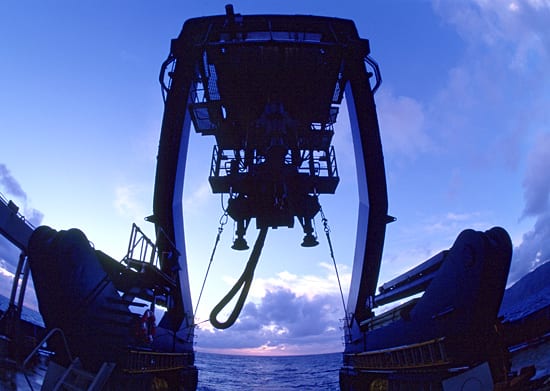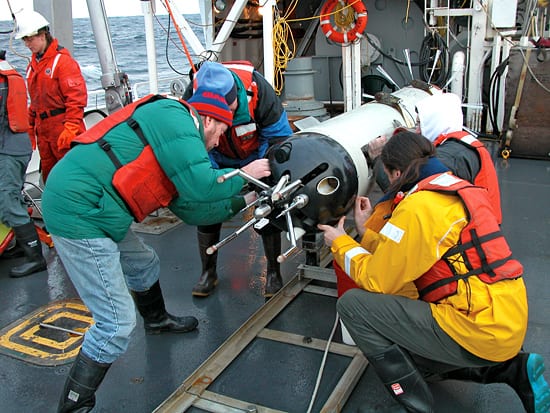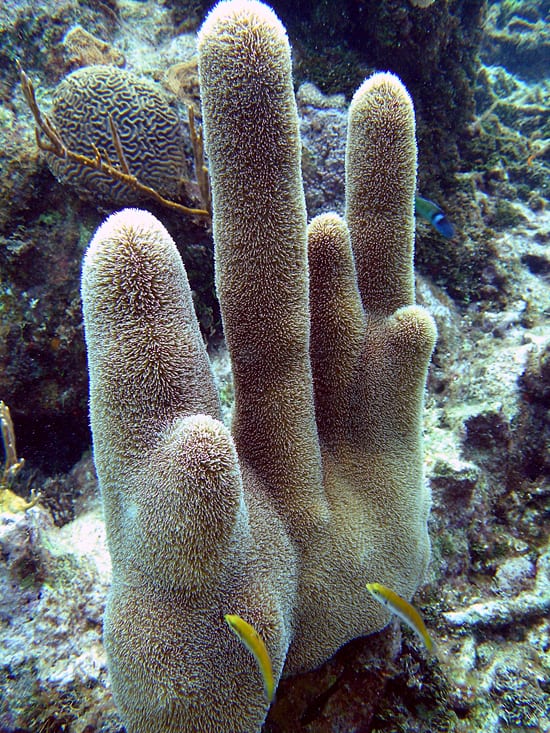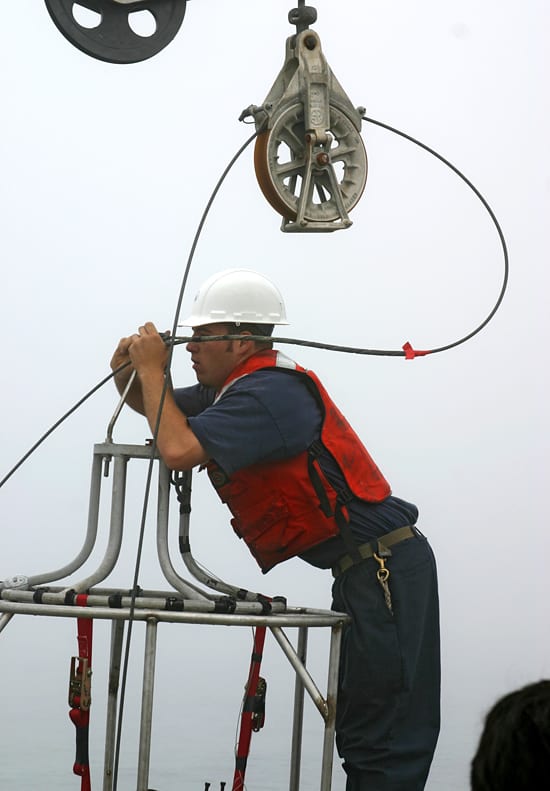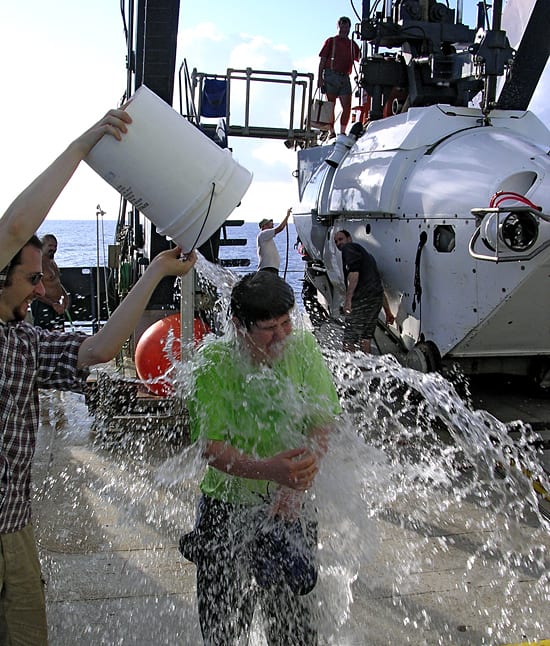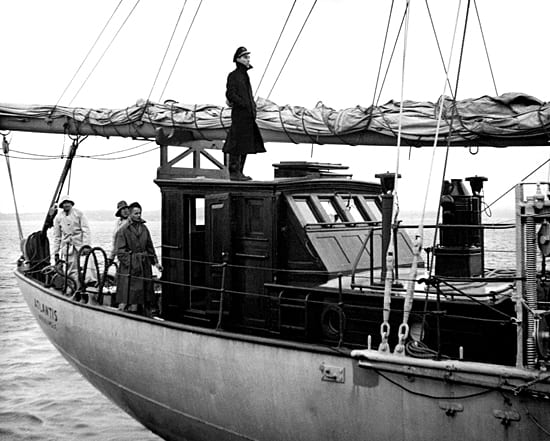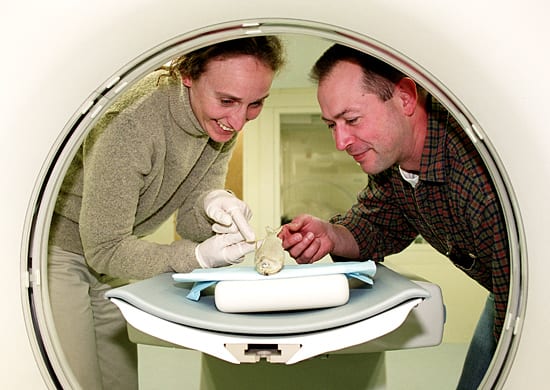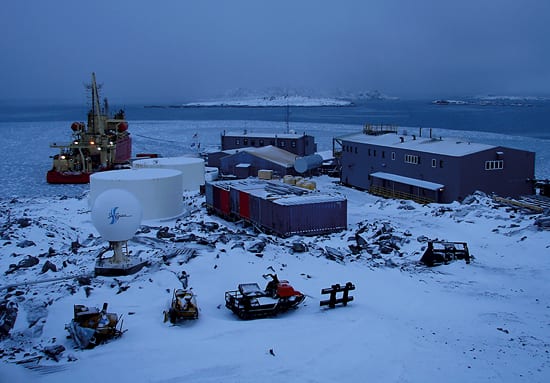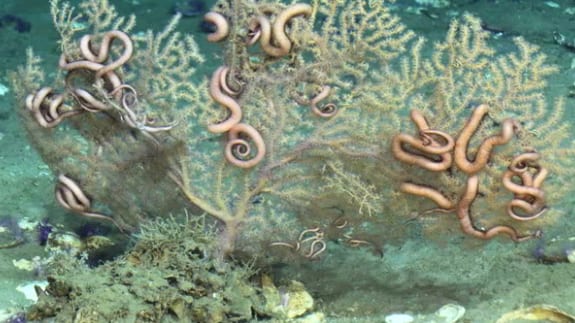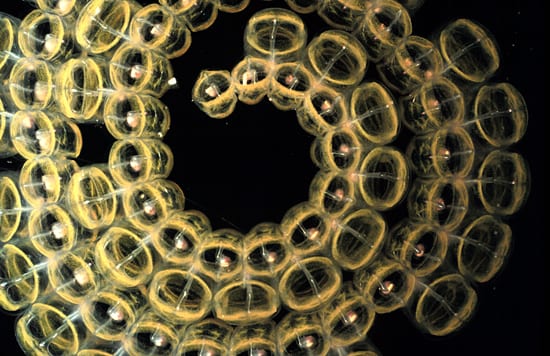Multimedia Items
Heavy Handling
The handling system for the new long core sampler was recently installed on R/V Knorr at the WHOI dock. The system, able to collect sediment cores up to 165 feet…
Read MoreUrban microbes
Research Specialist Mark Dennett of the Woods Hole Oceanographic Institution and Assistant Research Scientist Linda Amaral-Zettler of the Marine Biological Laboratory deploy a sonde (a sensor to collect water column data)…
Read MoreSeismic Supply
John Collins (left) and Jeff McGuire examine ocean bottom seismometers (OBSs) outside WHOI’s Iselin Marine Facility. These instruments are deployed on the sea floor to record ground movements from undersea earthquakes. WHOI…
Read MoreAlvin at Rest
The human occupied submersible Alvin rests in its hangar aboard research vessel Atlantis. (Woods Hole Oceanographic Institutiion)
Read MoreHot Stuff
MIT/WHOI Joint Program student Matt Jackson collected a fresh sample of lava during a geodynamics field trip to Hawaii in 2004. Jackson received a research award in 2005 from the Institution’s OceanVentures Fund.…
Read MoreSifting for microbes
WHOI Associate Scientist Rebecca Gast examines a gel used to sort and examine fragments of DNA from microorganisms found in water and sediment samples. The fragments help biologists determine the…
Read MoreTeaching the Teachers
Geochemist Meg Tivey explains the operation of equipment used to sample hot fluids emitted from black smokers on the ocean floor to high school science teachers. (Photo by Tom Kleindinst,…
Read MoreSearching for Clues in Coral
Research Specialist Anne Cohen and Summer Student Fellow Nicholas Jachowski study CT scans of coral in the new scanning laboratory at the Marine Research Facility. The scans help researchers study…
Read MoreInto the Wind
The original R/V Atlantis main mast and sails. The 142-foot steel-hulled vessel, namesake of the space shuttle, sailed for the Institution from 1931 to 1964. (Photo by Robert Munns, Woods Hole…
Read MorePolar Ponds
A thin layer of snow coats melt ponds in the Beaufort Sea, being sampled for a wide range of water properties. (Photo by Chris Linder, Woods Hole Oceanographic Institution)
Read MoreAttention to Detail
Victor Bender works on an ocean bottom seismometer (OBS), used to record underwater earthquakes. The instruments are part of the U.S. National Ocean Bottom Seismograph Instrument Pool maintained and operated…
Read MoreA Little Left Rudder…
Rick Rupan instructs students from the Children’s School of Science in Woods Hole in remotely operated vehicle (ROV) piloting at a local motel’s pool. The students designed and built the…
Read MoreMarine Mosaic
Mosaic of the R/V Thomas Thompson aft deck, full of moorings and other equipment for studies of the Kuroshio Extension Current off Japan, similar to the Gulf Stream in the…
Read MoreAre We Having Fun Yet??
Clothed in red neoprene “gumby suits,” participants in one of the Institution’s small boat safety seminars have some fun during training.(Photo by Tom Kleindinst,Woods Hole Oceanographic Institution)
Read MoreSwinging in the Breeze
The main lift line for the submersible Alvin is visible from the research vessel Atlantis A-frame. The sub is generally recovered in the late afternoon. (Woods Hole Oceanographic Institution)
Read MoreHigh Profiler
Researchers prepare the high-resolution profiler, or HRP, for deployment. The instrument, used in ocean mixing studies, records temperature, salinity, pressure, and horizontal velocity 10 times per second on descent to…
Read MoreA Hand of a Different Sort
A pillar coral, Dendrogyra cylindrus, resembling a human hand photographed in Honduras. The coral provides clues to past climate changes. (Photo by Konrad Hughen, Woods Hole Oceanographic Institution)
Read MoreSecure that Line
Deck hand Ian Hanley secures equipment on R/V Tioga during attempted right whale tagging off Georges Bank with biologist Mark Baumgartner. (Photo by Amy Nevala, Woods Hole Oceanographic Institution)
Read MoreWatery Welcome
A member of the science party gets the traditional welcome home greeting after his first Alvin dive during an Atlantis cruise in the North Atlantic. (Photo courtesy Woods Hole Oceanographic Institution)
Read MoreA Different Era
Captain Adrian K. Lane standing on the wheelhouse of R/V Atlantis, circa 1946. (Photo courtesy of Woods Hole Oceanographic Institution Archives)
Read MoreFishy Patient
Andone Lavery (left) of WHOI and Mike Jech from the National Marine Fisheries Service lab in Woods Hole prepare to conduct a CT scan on an alewife at the WHOI…
Read MoreSouthern Science
The icebreaker Laurence M. Gould at Palmer Station, one of three U.S. research stations on Antarctica operated by the National Science Foundation. Palmer is home to about 45 researchers and…
Read MoreThe Importance of Deep-Sea Corals
Many people think corals thrive only in tropical waters, such as the Great Barrier Reef or the Florida Keys. Biologist Rhian Waller of WHOI talks about deep-sea corals, found in…
Read MoreGolden Spiral
A colony of gold-colored Pegea Socia, a gelatinous creature common off the central and northern California coast. Aggregates form chains in a tight spiral coil. (Photo by Laurence Madin, Woods…
Read More
